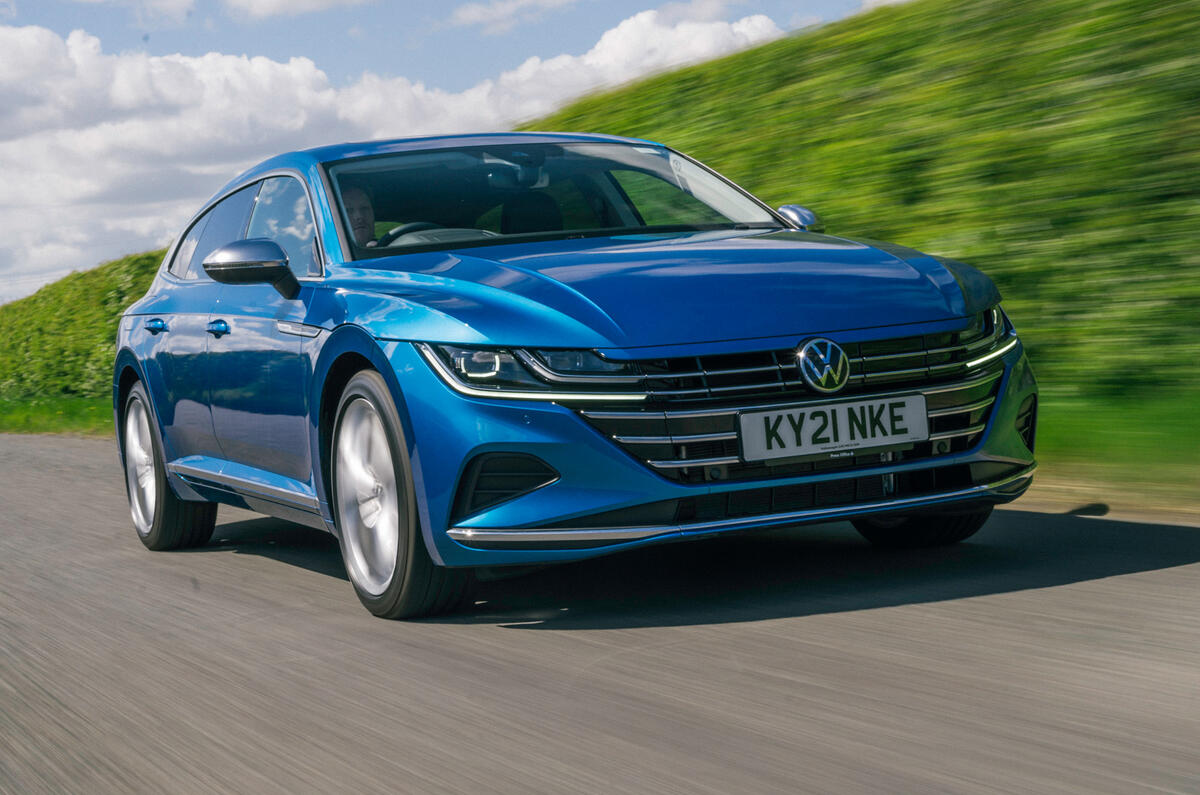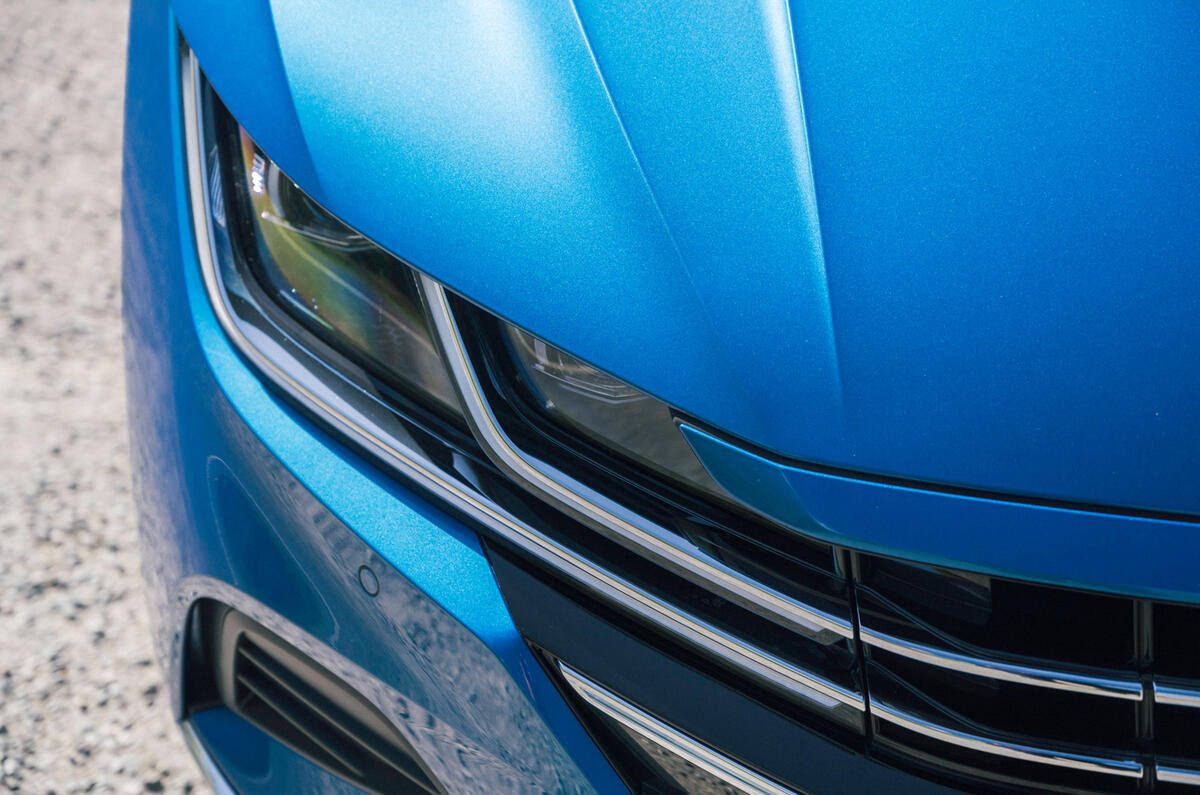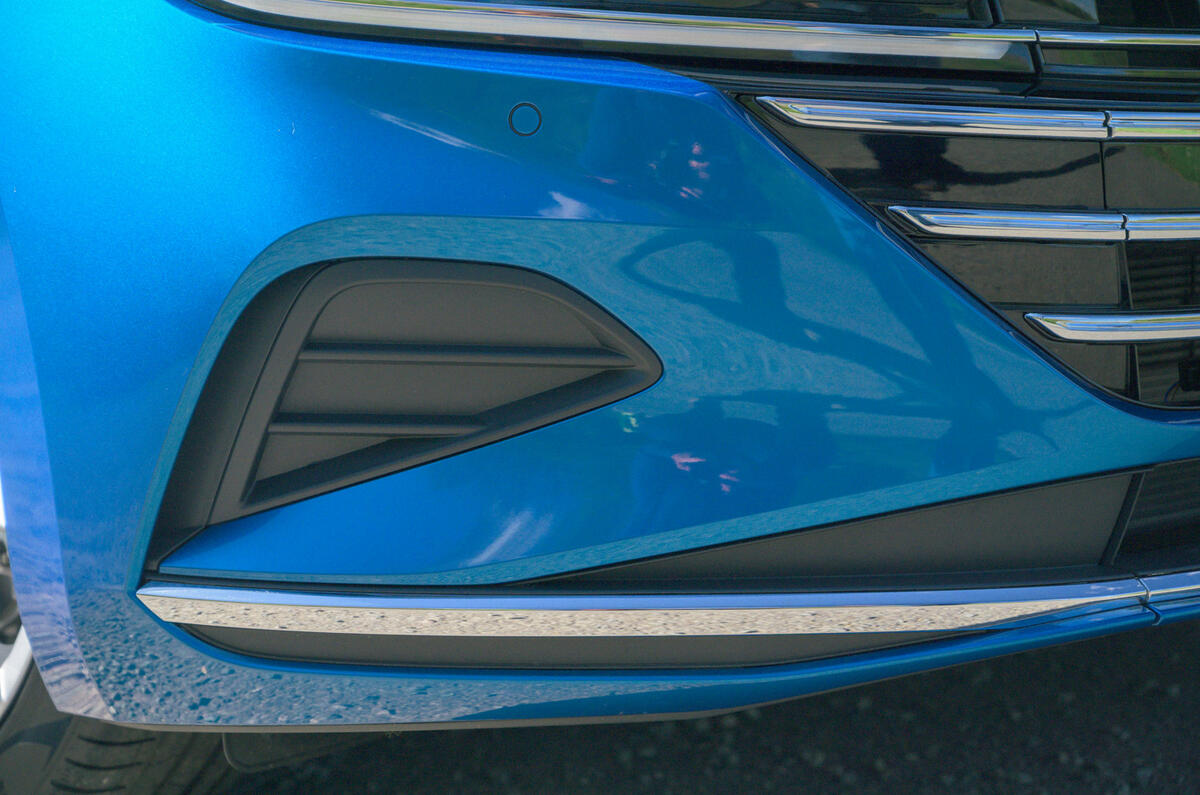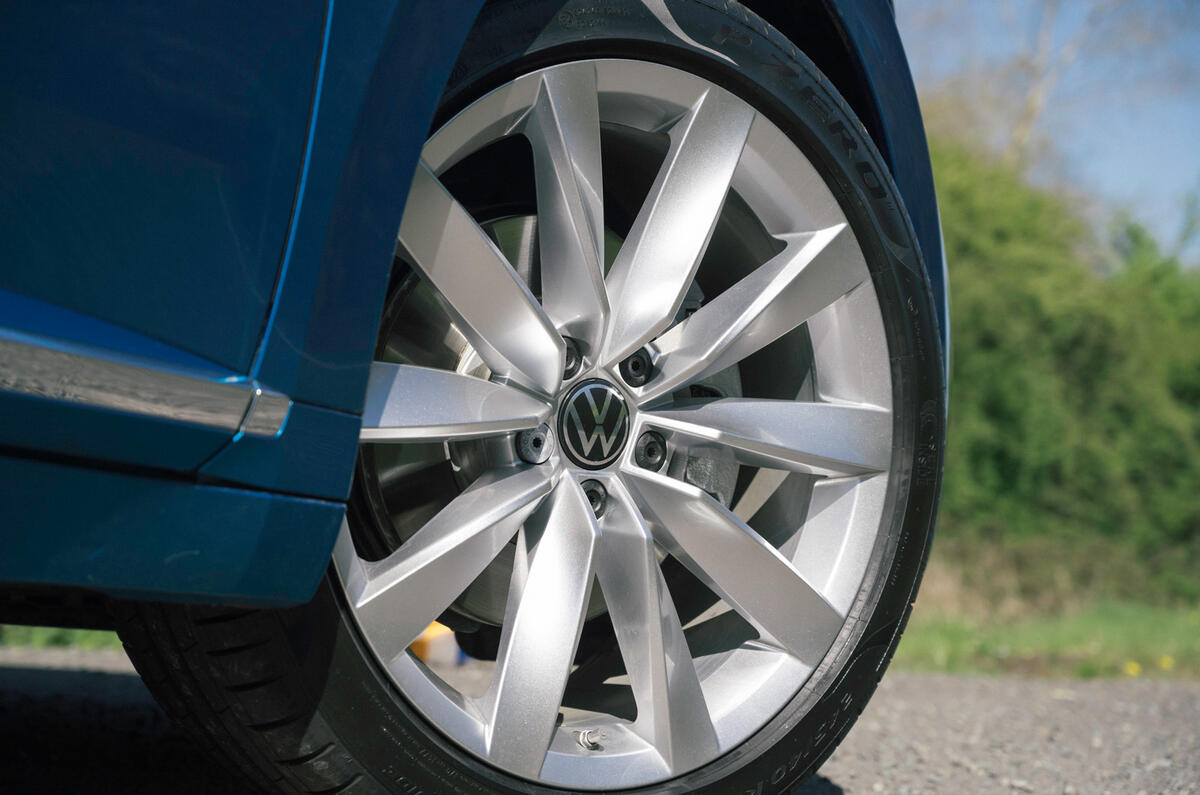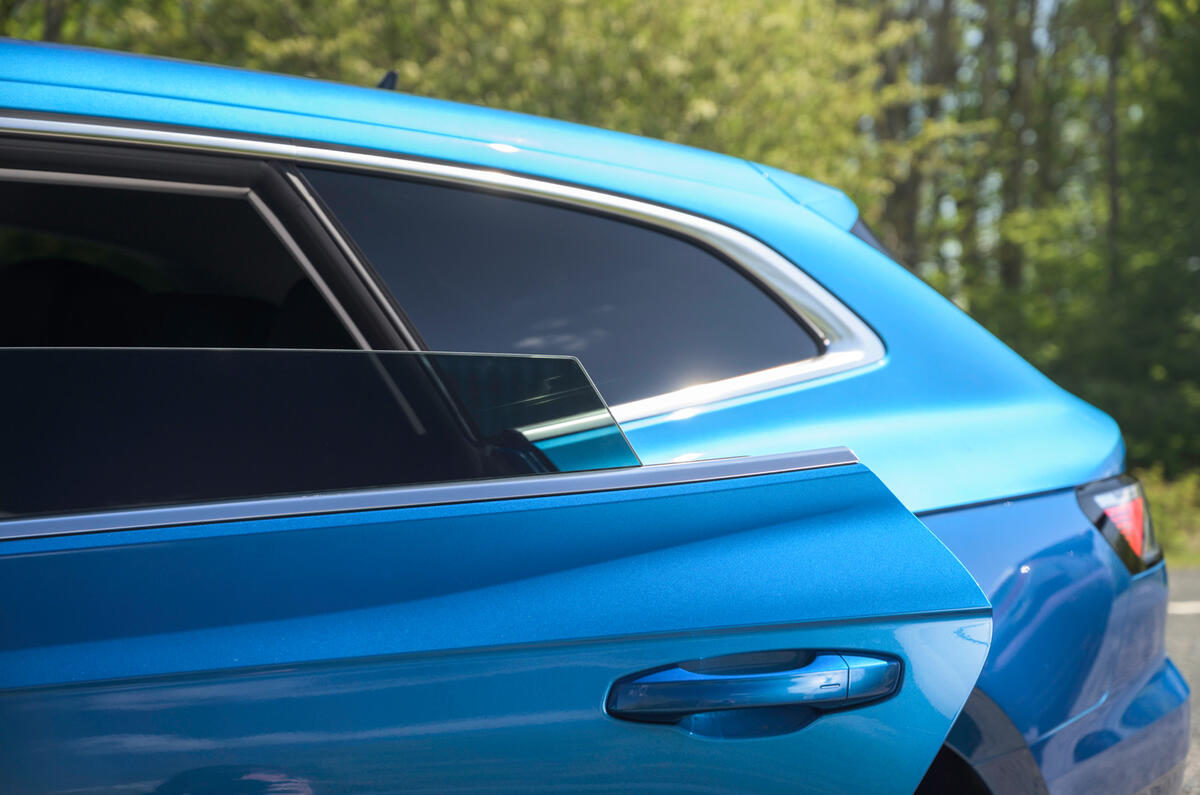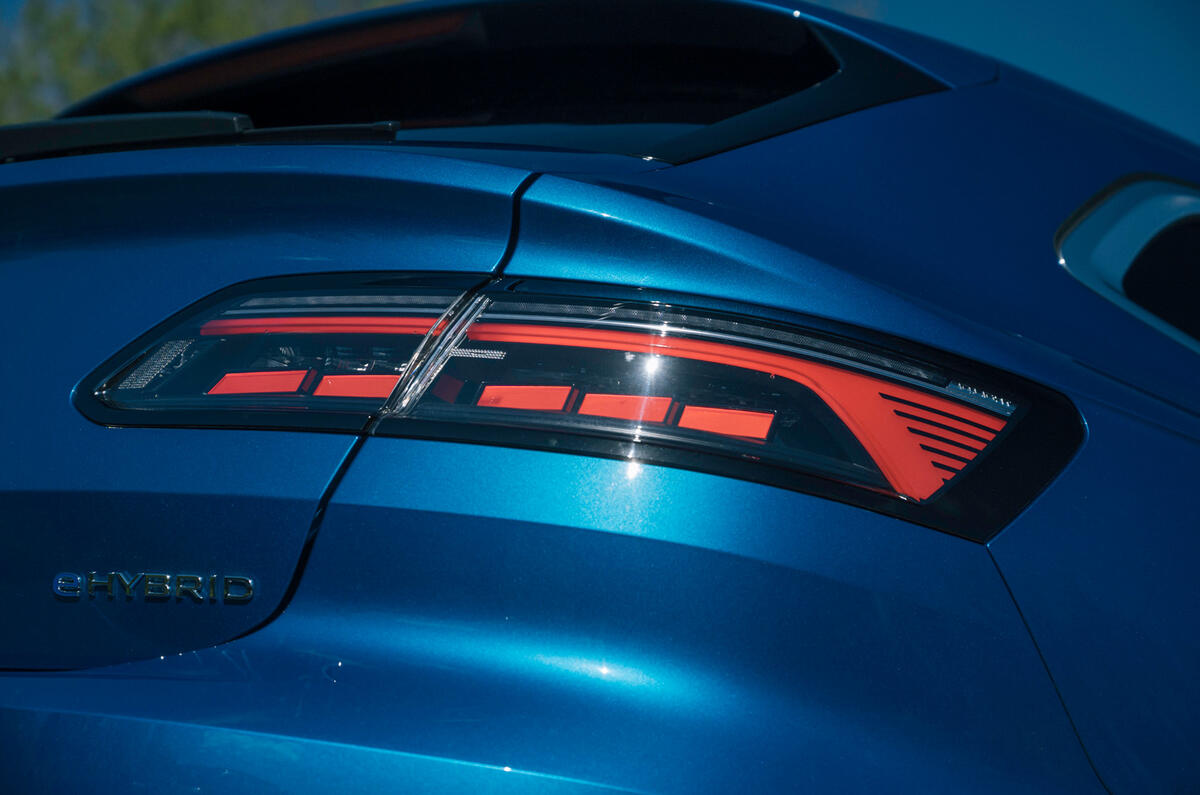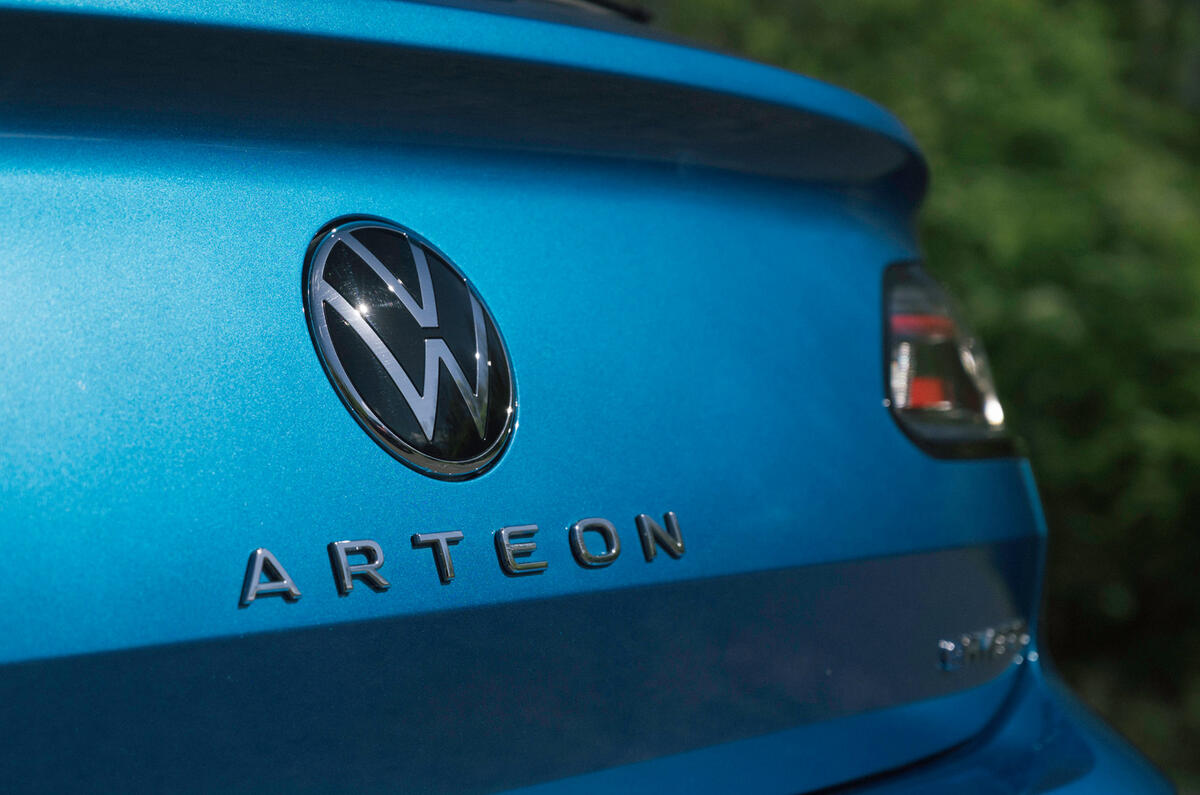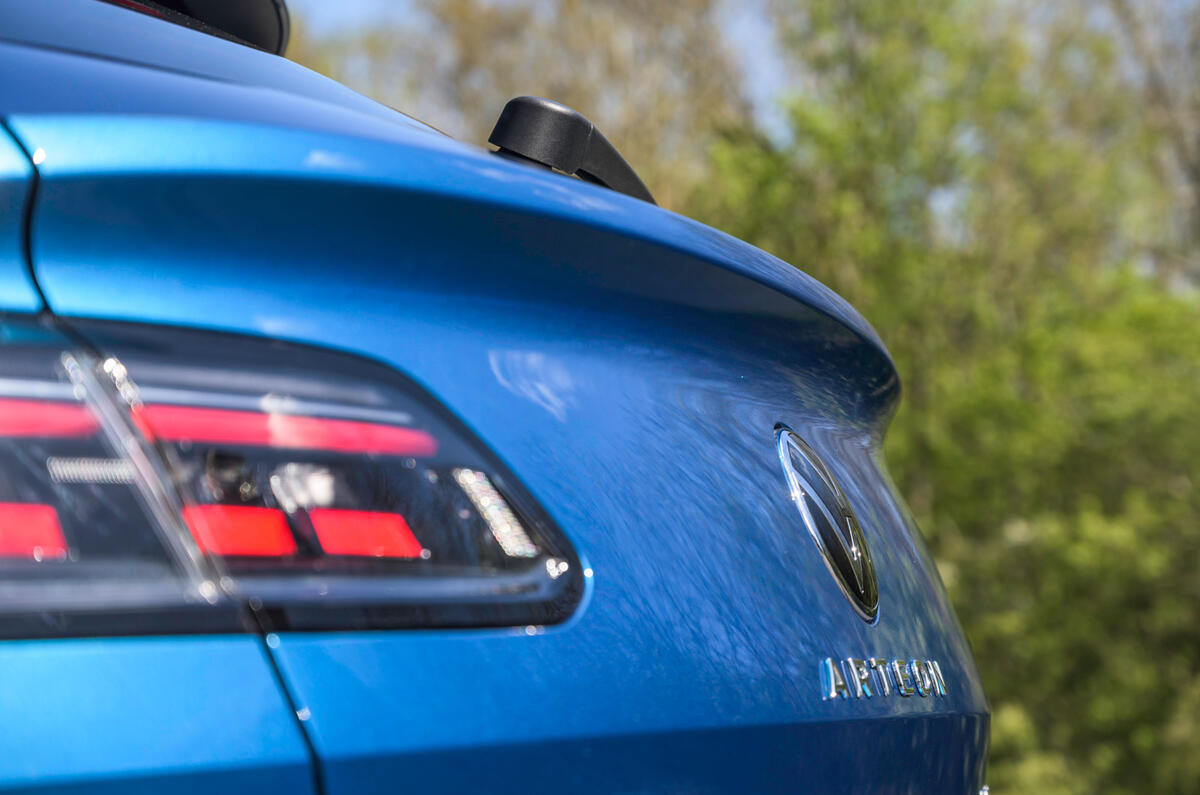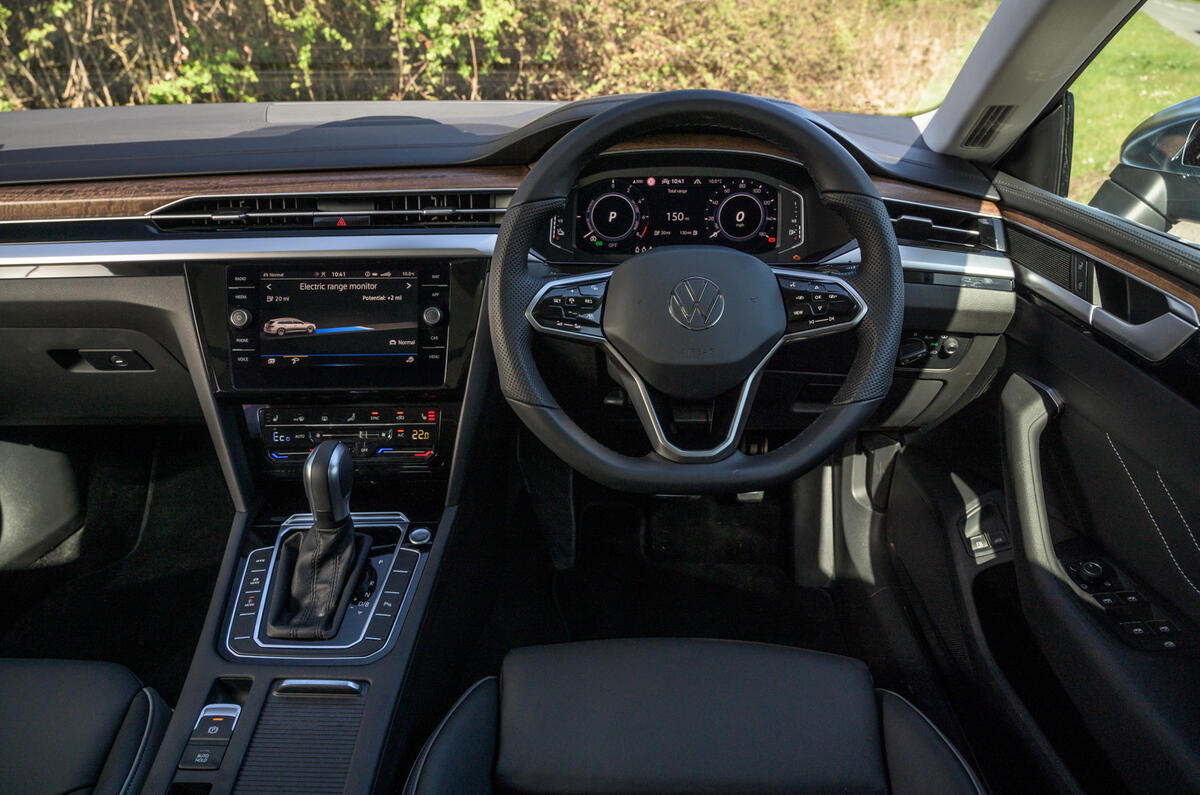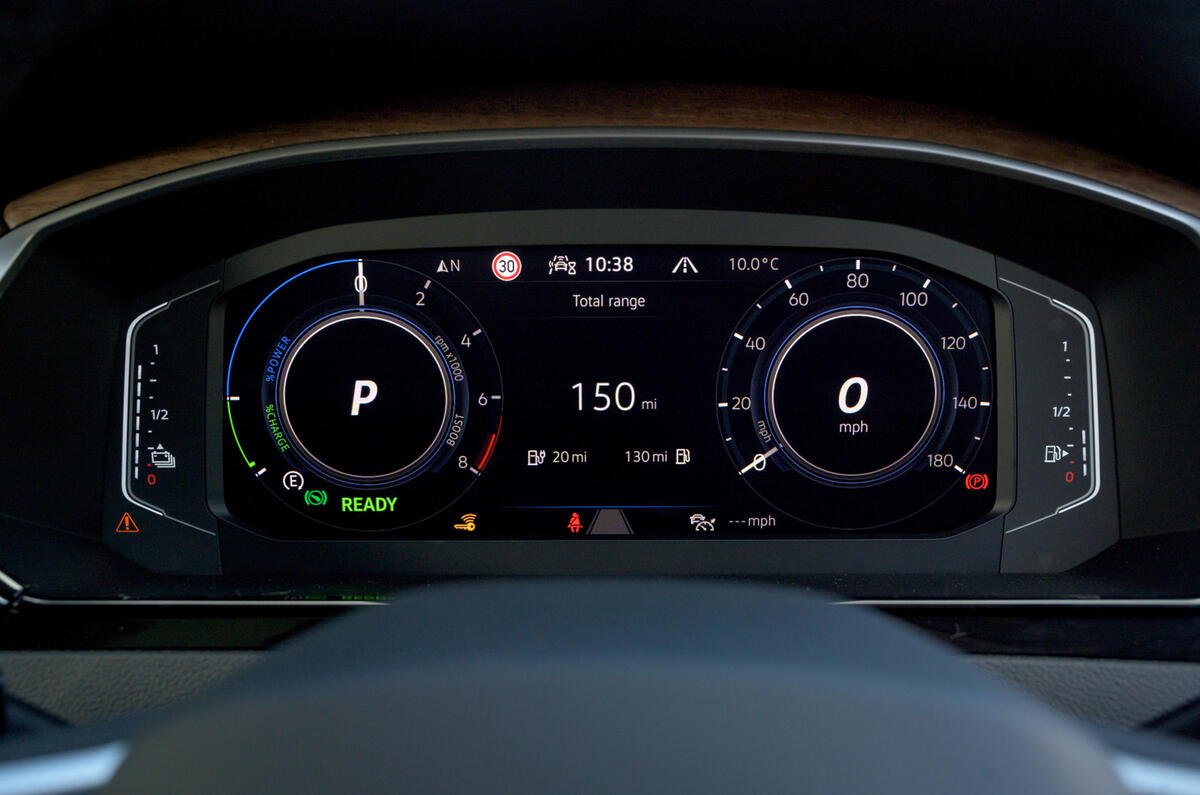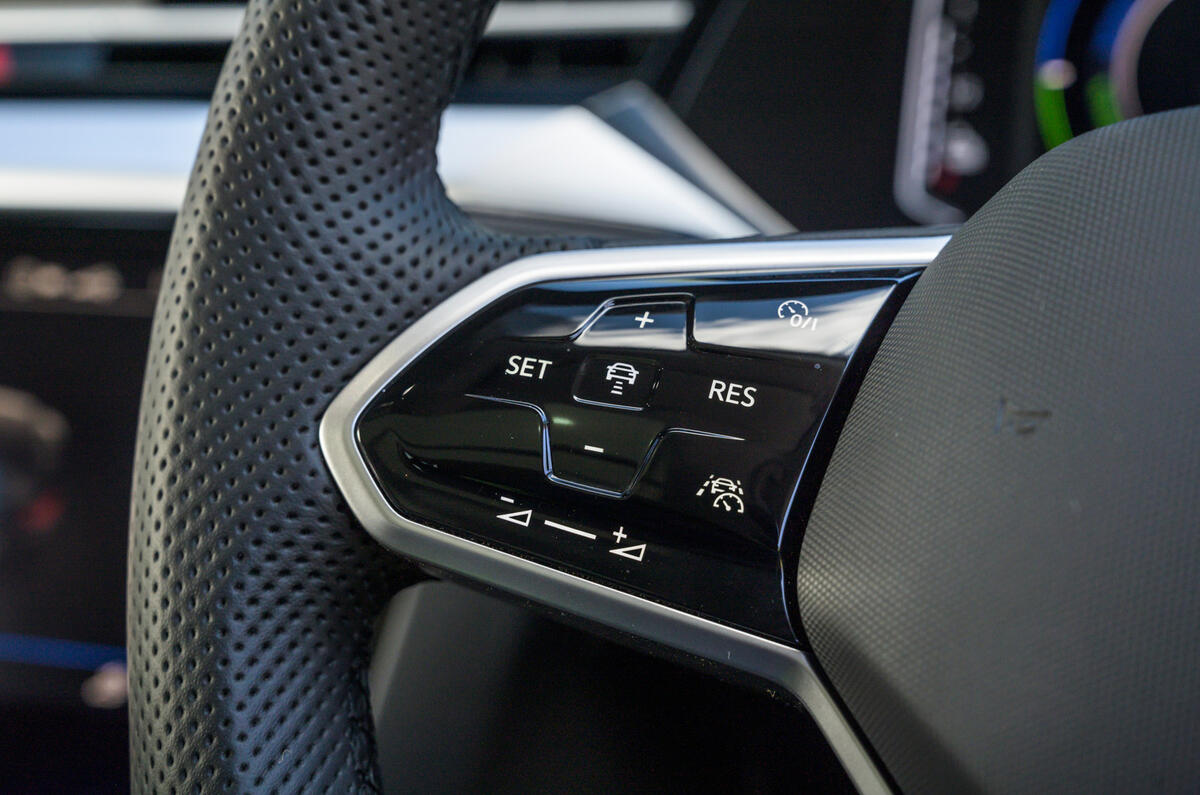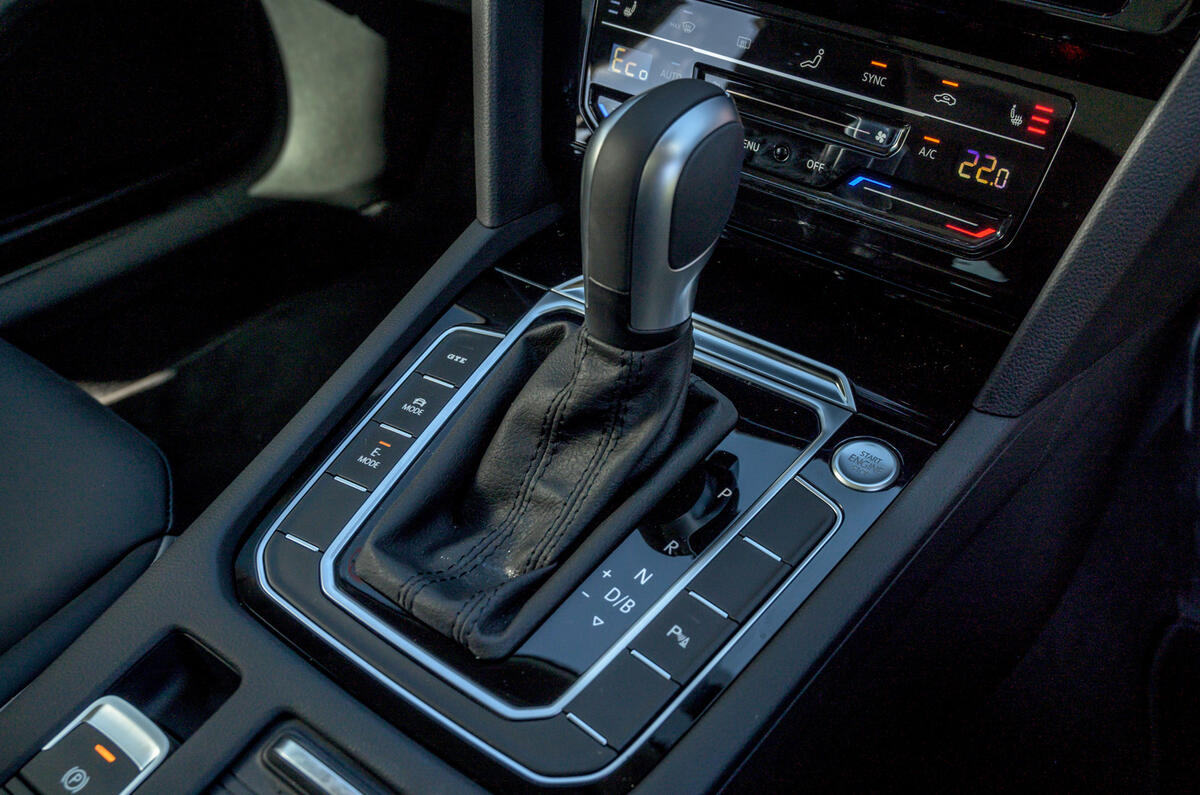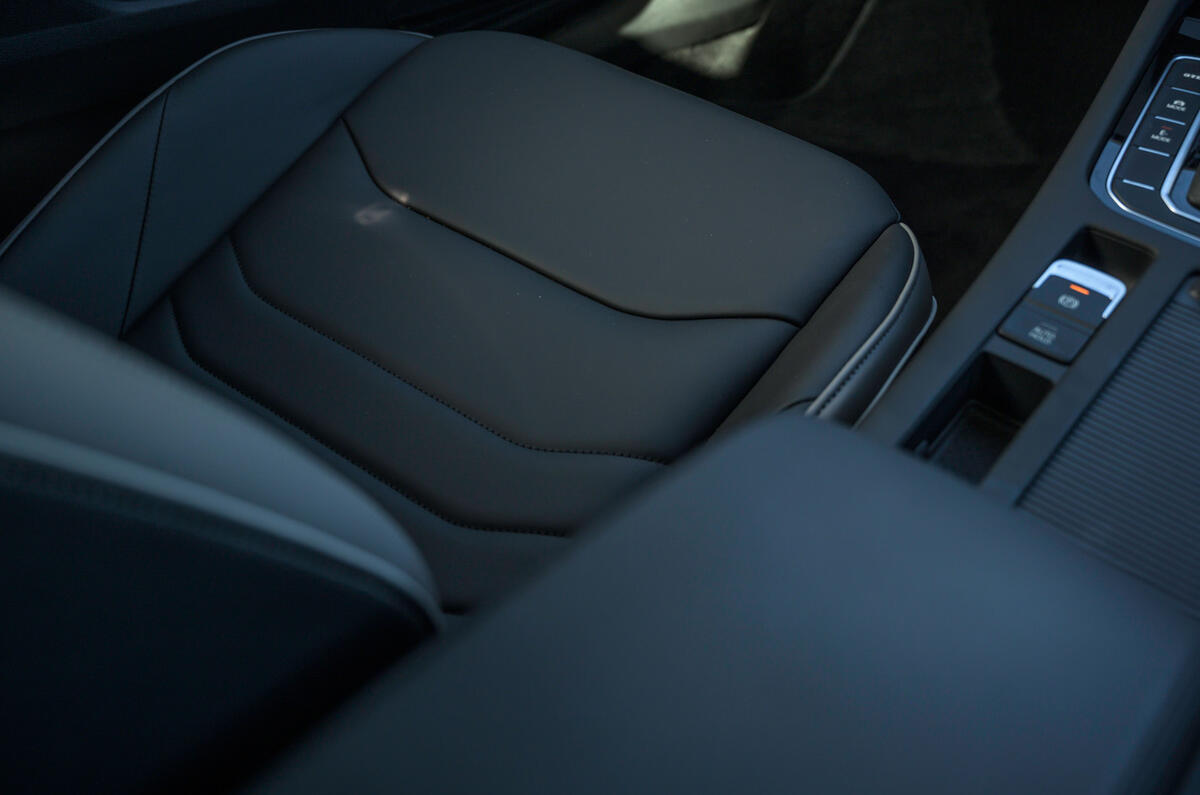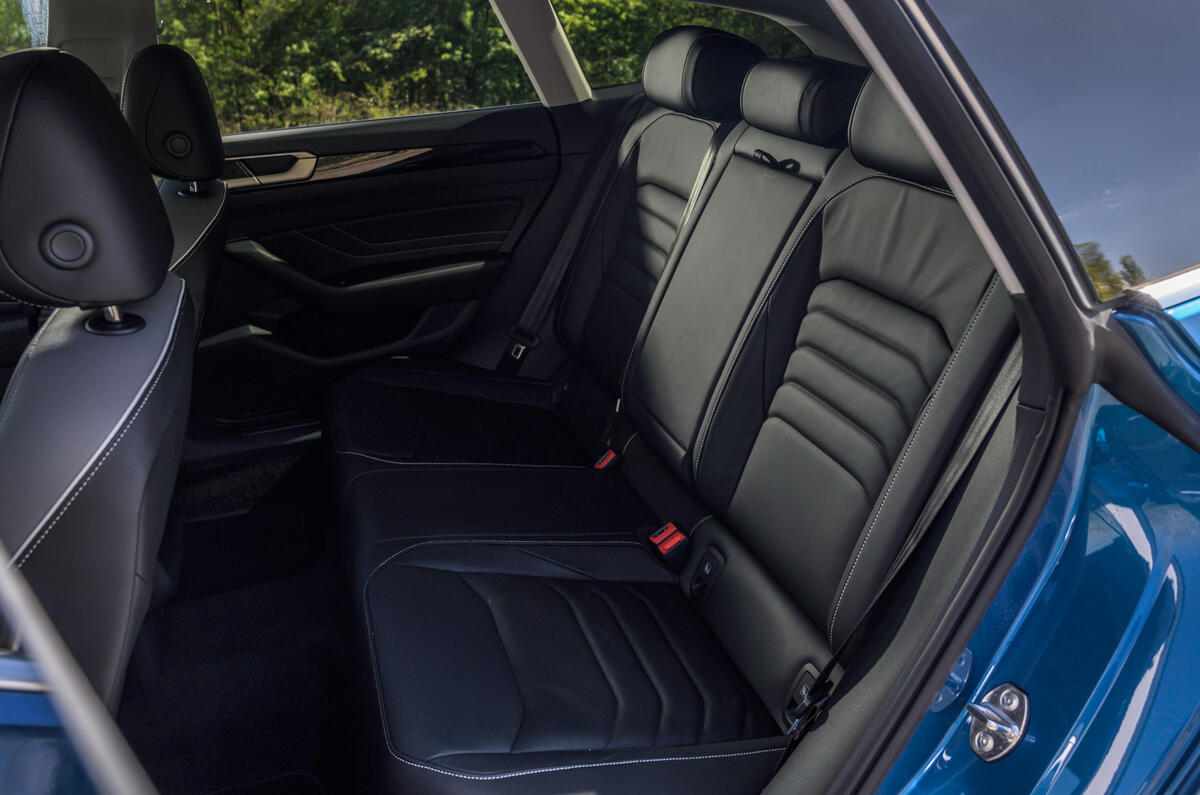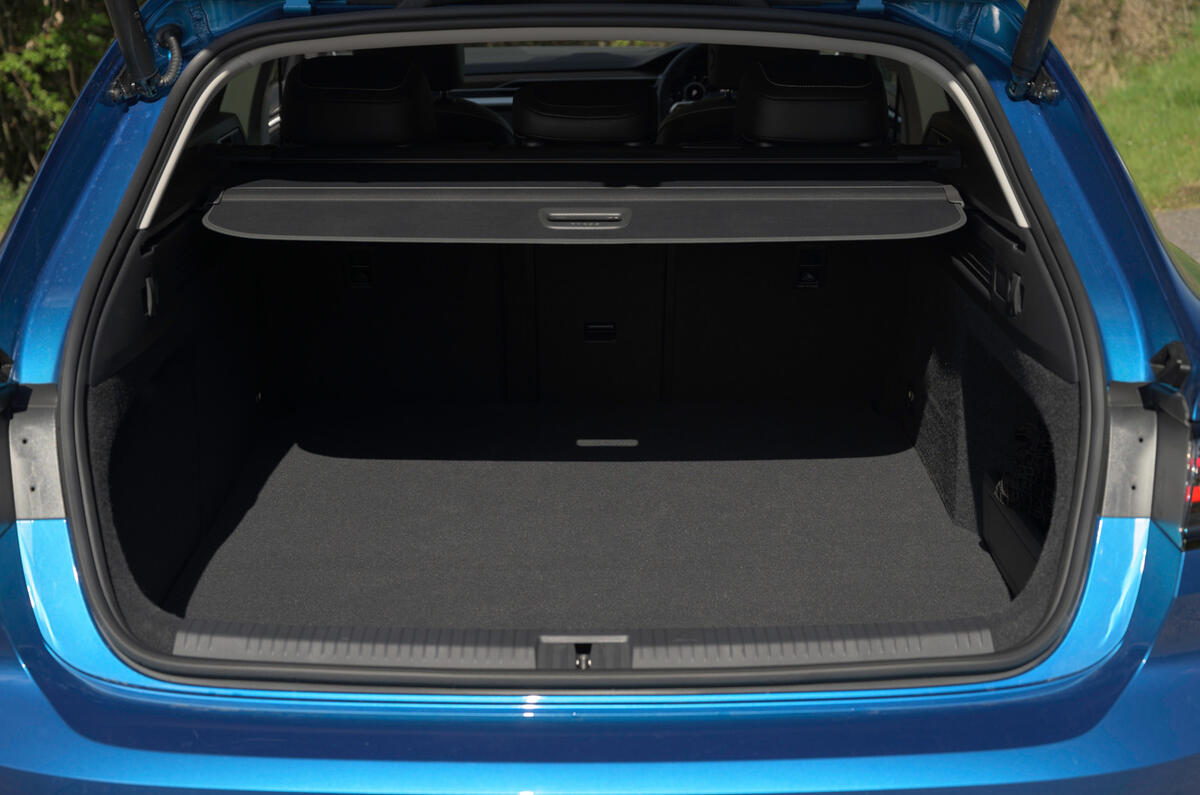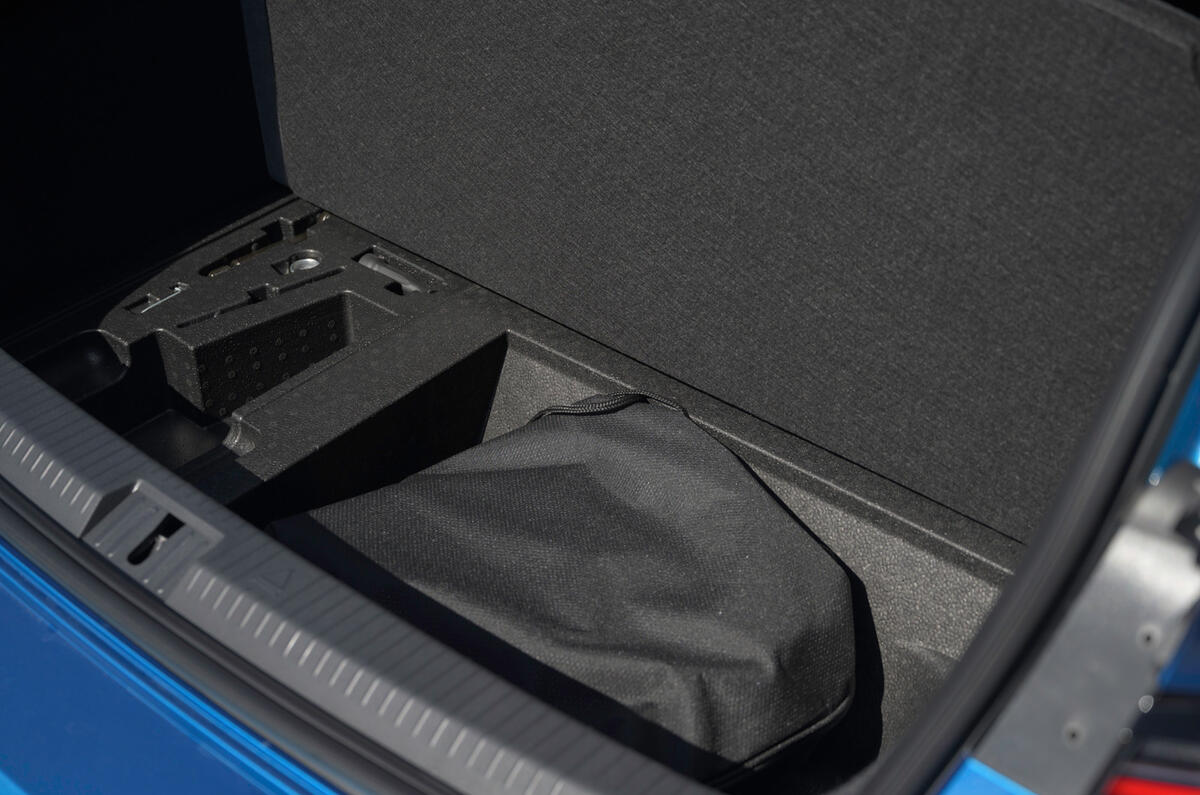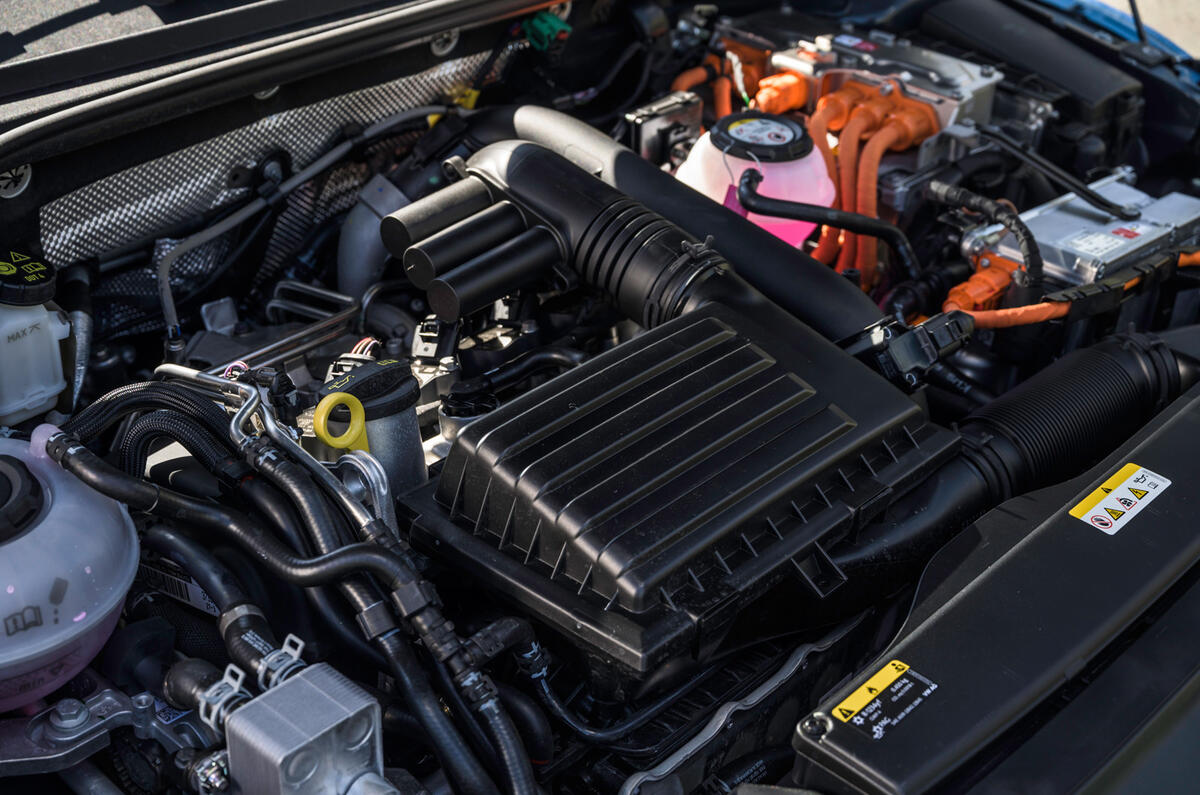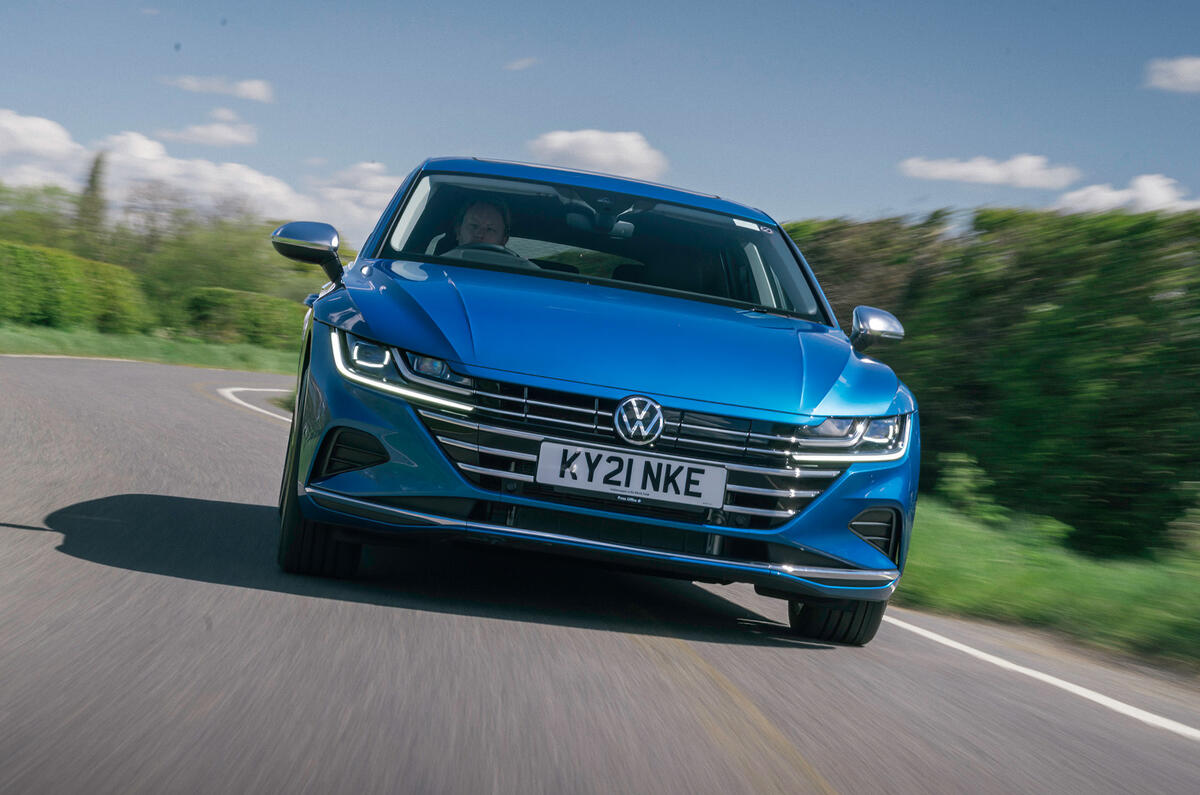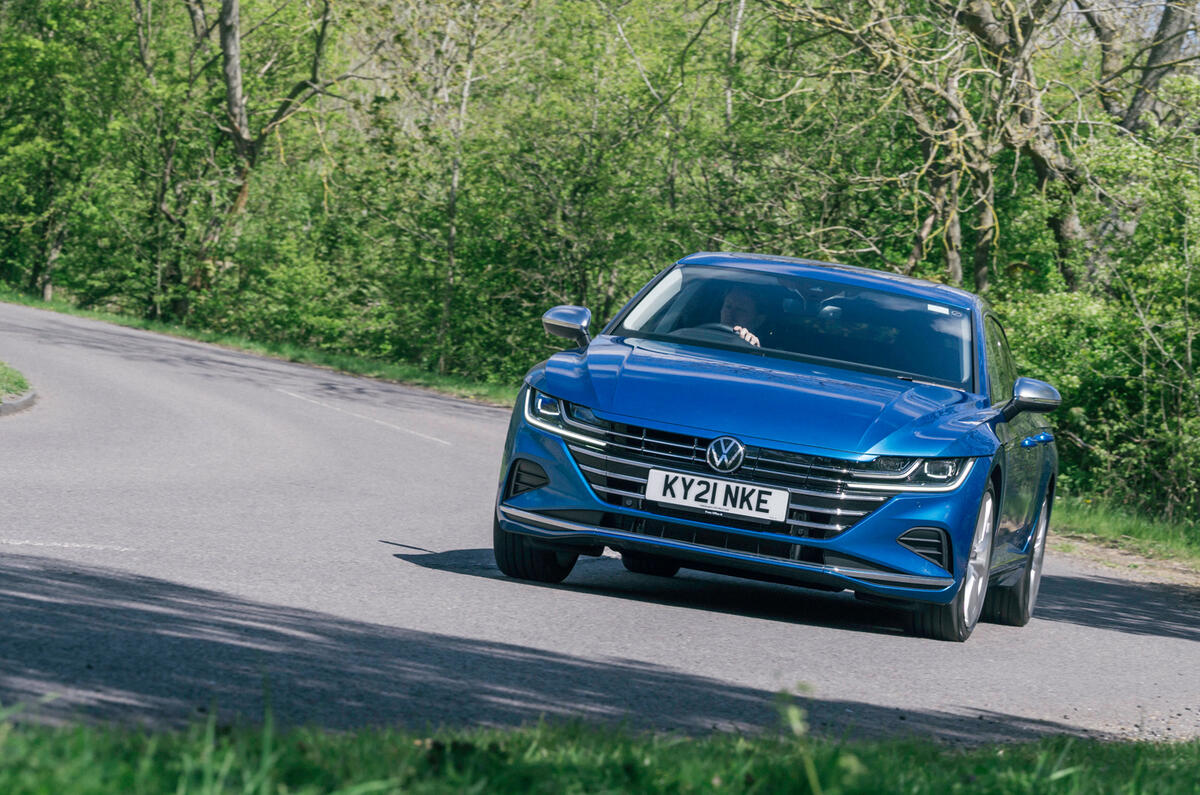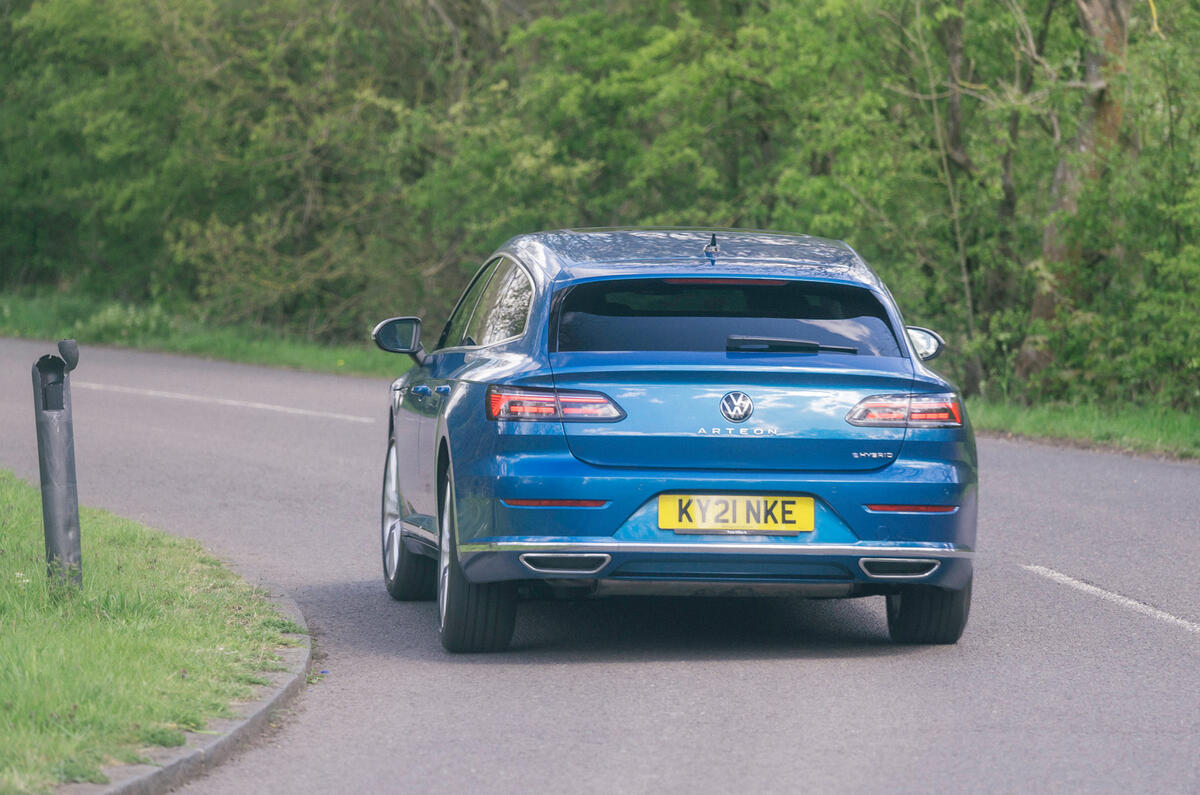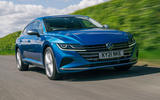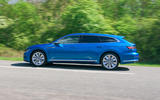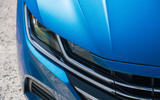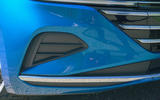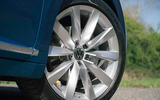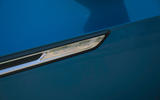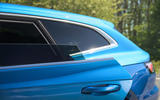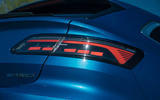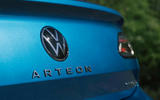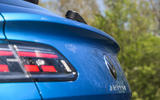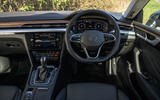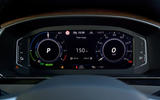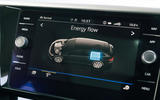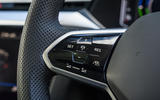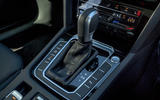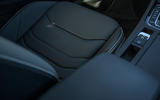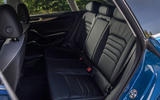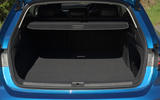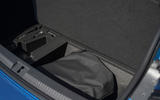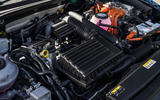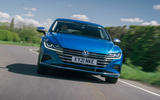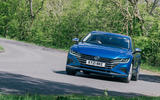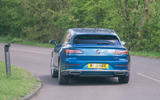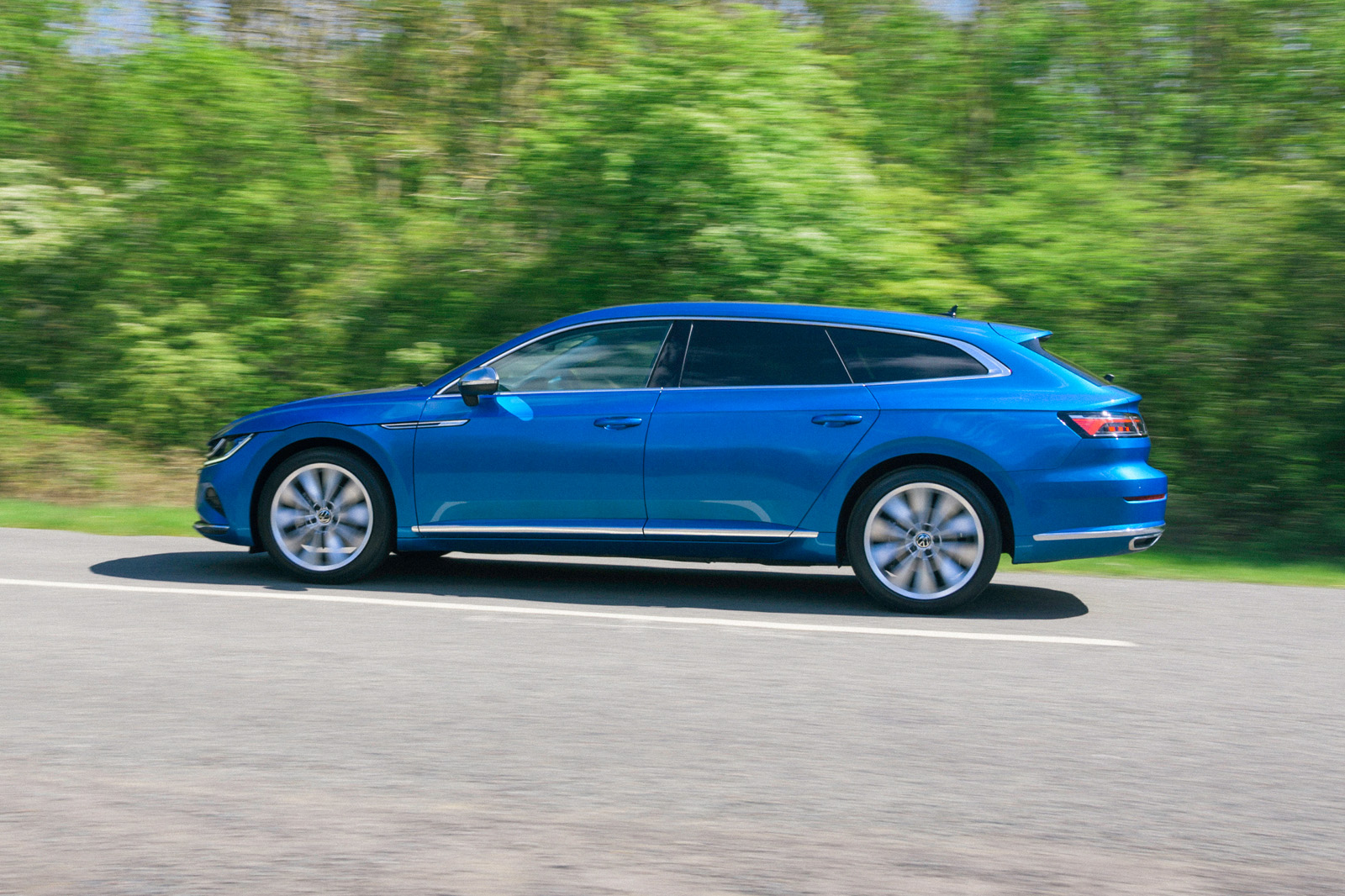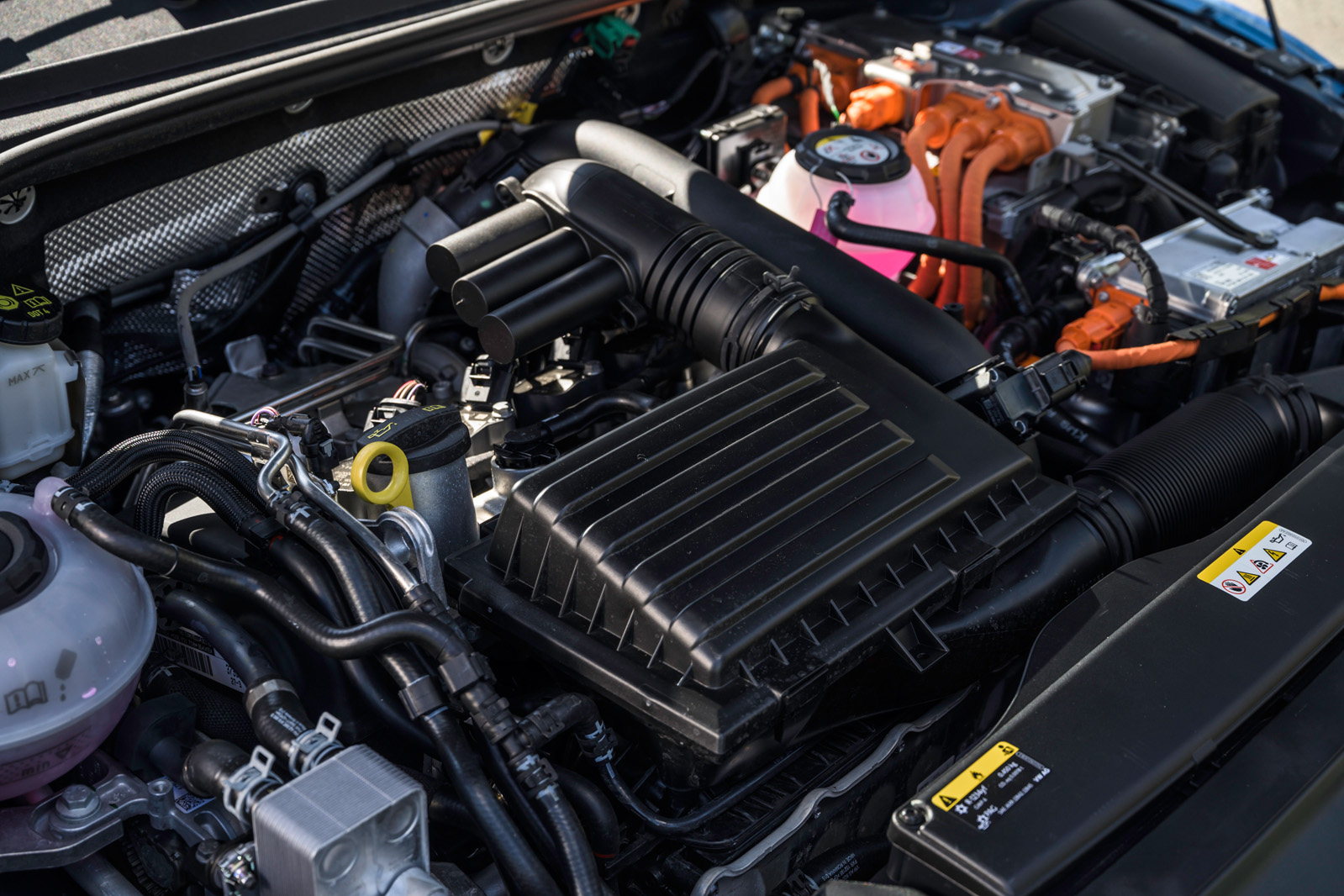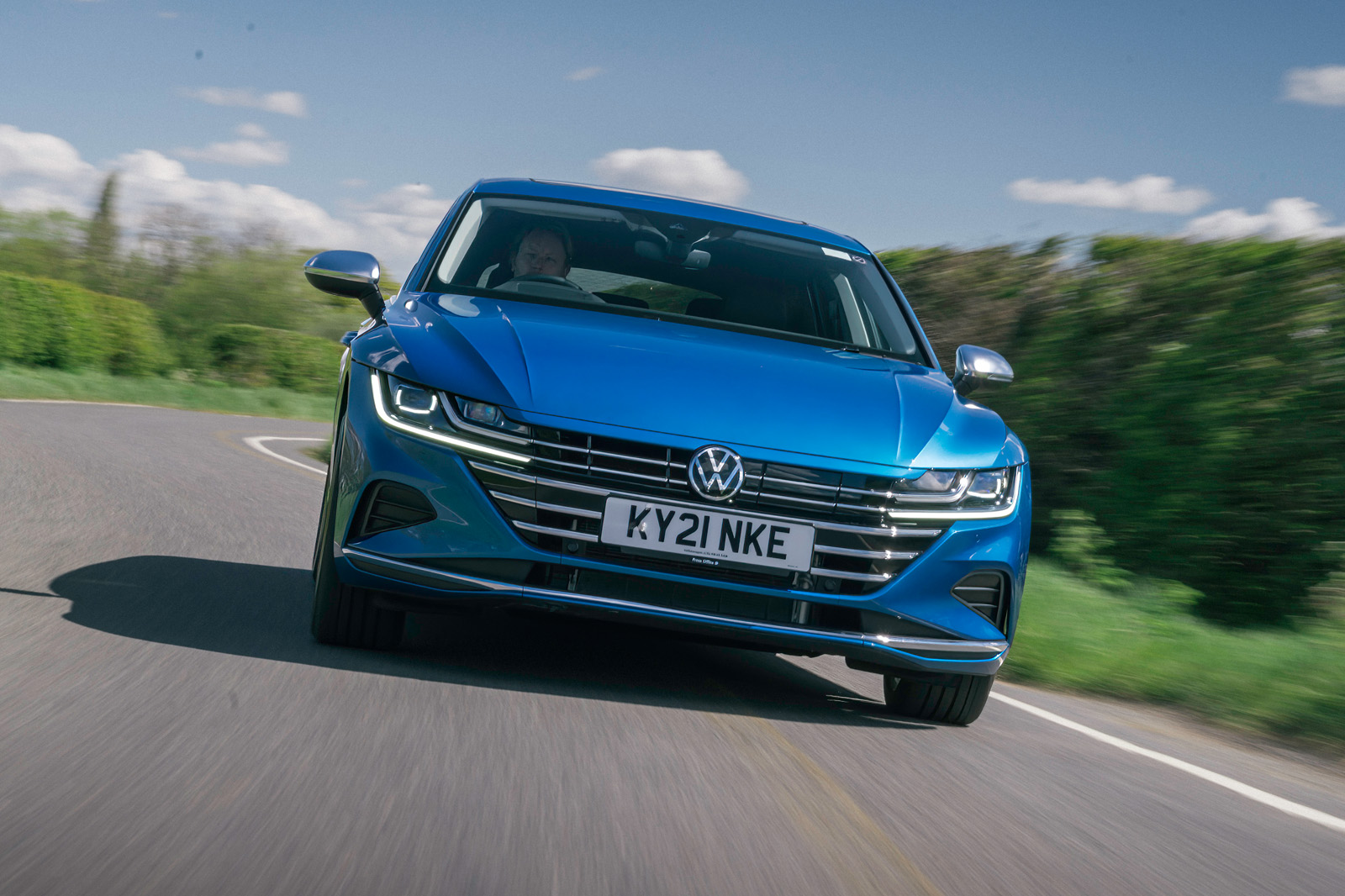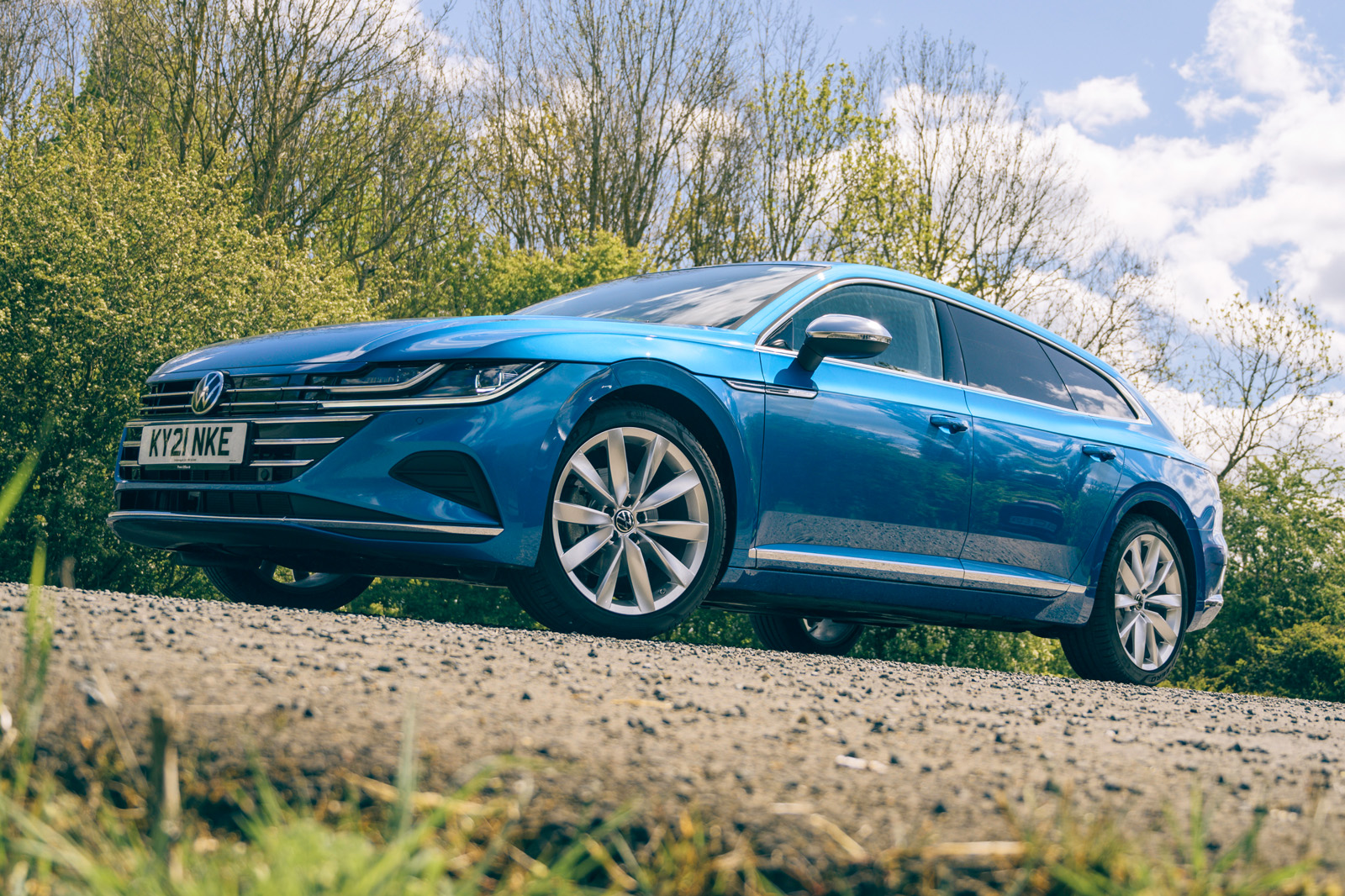The Volkswagen Arteon comes in three trim levels: entry-level SE Nav, then Elegance and R-Line, which are roughly on a par in terms of price but tilt the car towards either luxury or sporting cues respectively.
In reality, the differences are subtle and every Arteon offers the kind of bulletproof perceived quality that was commonplace for VW until standards began to slip just a touch with the arrival of the Mk8 Volkswagen Golf. The Arteon hails from before that time, and while the steering wheel (with its slightly awkward flat-panel buttons) has been updated to VW’s latest, the rest of the cabin is mostly unchanged.
It’s an environment of hard lines, glossy surfaces, metal-dipped trim and, in the case of our test car, a rather fetching expanse of eucalyptus across the broad dashboard.
It’s also a cabin that prizes space above all else. Even the perched front row seating makes the scuttle ahead of you and beltlines on each flank feel refreshingly low, and anyone who goes for the panoramic roof will find it only enhances the sense of expansiveness. Second-row leg room also remains at the very top end of the class, and the Arteon will facilitate families better than many regular mid-sized estates such as the BMW 3 Series, Mercedes C-Class and Peugeot 508.
As for raw carrying capacity, the VDA figure (which is determined by filling the boot with one-litre blocks) for the Arteon Shooting Brake is 565 litres, versus 563 for the fastback. However, VDA measures up to the parcel shelf only, and it’s in the space above the load cover that the Shooting Brake makes its gains.
That said, the eHybrid loses out on 110 litres of carrying capacity, because of its drive battery, and all versions of the car go without an adjustable boot floor, leaving a substantial lip. Note also that the Volkswagen Passat Estate is usefully more commodious.
VW Arteon infotainment & sat-nav
The Arteon’s Discover Media Navigation system harks back to a time before the programming of Volkswagen’s infotainment offerings had been taken in-house and, frankly, messed up.
The system in the new Golf is plagued by glitches and latency, and the use of haptic controls for the ventilation and volume have proved unintuitive and at times unresponsive. VW is currently in the process of curing the new system’s ills, but software updates can do only so much.
Happily, the Arteon’s system is crisp and bright in its graphics and simple in its menu structure, and it benefits from physical controls for the important tasks. There is also a range of readouts relating to the hybrid system, including one that lets you set the charge state for the battery. (The engine can top it up on the move.)
However, wireless phone charging is not available, and the 10.3in digital instrument binnacle isn’t that sharp.


